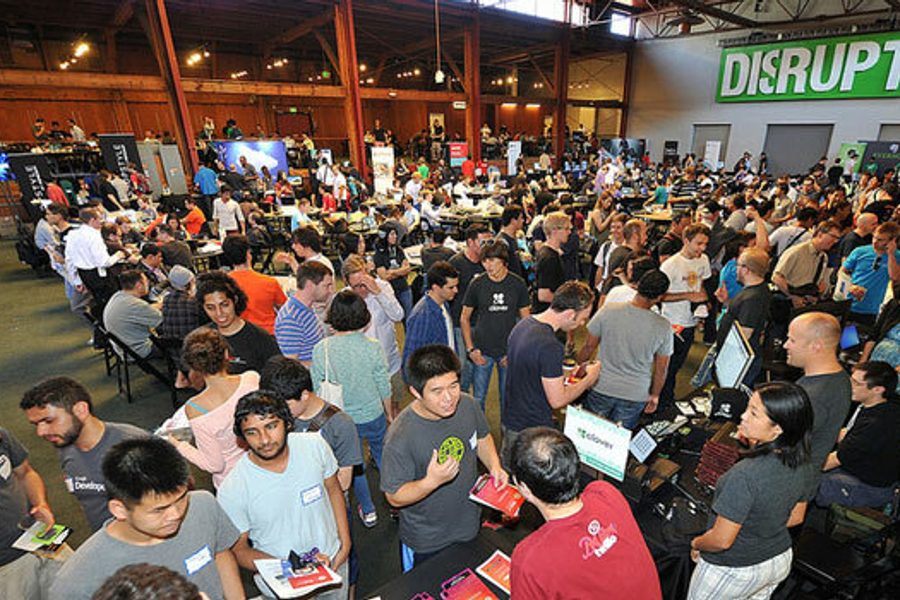Tech Bros Are Losing
The tech industry’s golden children can’t get away with bigotry.
Jude Ellison Sady Doyle

Pax Dickinson, formerly the Chief Technology Officer of Business Insider, thinks that he lost his job because we don’t understand him.
This, anyway, is the message one gets from his recent interview with New York Magazine’s Daily Intelligencer. After years of Dickinson amusing himself by posting messages of varying offensiveness to his personal Twitter account, Nitasha Tiku at Valleywag and others finally gave those Tweets a wider audience. And boy howdy, did people ever get pissed off. Dickinson was fired from Business Insider the next day.
“It’s unfortunate that people didn’t try to get my side of the story at all, really,” Dickinson told the Daily Intelligencer. “It was just an instant thing. A post went on on Valleywag at 6:30 p.m., and 9:30 the next morning I lost my job.”
The offending Tweets are worth looking at, if only to understand why they provoked such a visceral reaction. There’s the one, for example, where Dickinson takes on trans rights:
so he’s a woman, but he still has Y chromosomes? now who doesn’t understand how biology works?
There’s the one where Dickinson explains feminism:
Men have made the world such a safe and comfortable place that women now have the time to bitch about not being considered our equals.
There’s the one where Dickinson airs his feelings about the working man:
aw, you can’t feed your family on minimum wage? well who told you to start a fucking family when your skills are only worth minimum wage?
And then there’s the Tweet in which he manages to drop the n-bomb, imply black men are rapists, state that people who “dress like whores” are to blame for their own rapes and reference Mel Gibson — all in fewer than 140 characters. We won’t print that one here. We would just feel dirty.
But Dickinson, apparently, thinks we “misinterpreted” these statements. Fair enough: When people are angry and hurt, we typically don’t spend a lot of time weighing alternate perspectives. But Dickinson’s own interpretations aren’t exactly soothing. On that Tweet about minimum-wage earners, for example, he told the Daily Intelligencer:
When I say that [someone’s] on minimum wage, you know, I’m pointing out there’s a skill problem; the problem isn’t the amount of money they make, the problem is the skills.
In other words: There’s the “perspective,” shared by many of Dickinson’s detractors, that Pax Dickinson thinks people who do blue-collar work deserve to be poor, and to suffer. And then, there’s the apparent Pax Dickinson Perspective: That Pax Dickinson thinks people who do blue-collar work deserve to be poor, and to suffer, and that it’s fine for Pax Dickinson to think that.
It’s not fine for Pax Dickinson to think that. And it seems clear that the people who called for his termination from Business Insider understood his so-called intended points pretty darn well, and that someone in a position of authority probably shouldn’t be actively hateful and discriminatory toward the people who might end up having to work for him. (Nor is a publication likely to get the broadest and most useful pool of applicants when someone at that workplace is publicly hostile toward marginalized folks.) But the way that pushback has played out is fascinating. Even as we keep hearing stories about bigoted “tech bros” — Dickinson’s Twitter crusades, for example, or the oh-so-mature “Titstare app” prank pulled by Jethro Batts and David Boulton at TechCrunch’s Disrupt Conference—the resistance to their behavior is growing more widespread, more robust, and much more effective. And that resistance is thanks, in large part, to the same cyberspace landscape in which these bros have made — or are trying to make — their fortunes.
“I see more activity and more enlightenment certainly than there used to be, more than there was even five years ago, within the [tech] community,” says Deanna Zandt, media technologist and author. “I do think people are starting to recognize that toxicity in a community actually hinders innovation. People are starting to recognize that [bigoted behavior] is not generally a good idea; this is keeping people who might be good for their community out of their community.”
Amanda Hess, who’s been covering the Dickinson story for Slate, has argued that Dickinson’s downfall was simply not understanding how the Internet worked. She attributes his behavior to “digital dualism,” a concept that originates with theorist Nathan Jurgenson.
“Some people see the Internet as this space that’s divorced from reality,” Hess explains, “and it tends to be people who are less marginalized, who are able to see the Internet as this free-wheeling Libertarian playground that they can use for whatever they want … People who are more marginalized don’t have that luxury. And in many ways those people turn to the Internet to create fuller lives.”
Those marginalized people, Hess says, turn to the Internet to find the support, solidarity and community they may not be able to get locally.
When you have an increasingly large number of marginalized people who use the Internet to find community and deal with the oppression they face in the “real world,” and a number of privileged people who use the Internet as a no-rules, no-consequences playpen, some explosive contact is bound to happen. And, as we’ve seen with Dickinson’s termination or the blowback over the aforementioned Titstare — yes, some people found the idea of an app “where you take photos of yourself staring at tits” entertaining, but when you have headlines describing your work as “The Unfunniest Joke in Technology” and your conference actually apologizes for letting you speak, you’ve probably lost the advantage — and many others, those explosions seem increasingly less likely to work out in favor of the play-penners.
Zandt also says that it’s crucial to form communities. She points to groups like the Tech Lady Mafia, founded by Aminatou Sow and Erie Meyer, which runs both a public Tumblr and a private listserv to provide support and job listings for women who work in tech, as evidence for the importance of cooperation in a potentially oppressive environment.
“Individually, taking these things on leads to major burnout really quickly, especially if you don’t feel like you have influence or you are connected,” Zandt says. She recommends that people who want to meaningfully resist sexism or prejudice in their industry spend time “seeking out networks of people who can make you feel not completely insane, so that you have those communities when you need them.”
Still, if we seek support only in communities of people who share our problems, it’s easy to cast our concerns as limited, personal, and therefore irrelevant. It’s true, as tech journalists like Jenna Wortham have argued, that the Internet makes the world more transparent: It’s increasingly impossible to live in a mental gated community, hearing only from the people who share your location or your privileges or your tastes. Yet structural privilege ensures that, even if everybody can be heard, only some will be listened to.
Zandt argues that one of the major victories in recent years, and one of the big reasons that it’s easier to tackle racism, sexism and other forms of bigotry online, is the increasing number of privileged allies who are willing to speak up. She cites John Scalzi, a white sci-fi writer who committed himself to explaining privilege in terms that were relatable to fellow white male nerds, or Toby Daniels, who committed himself to gender parity at Social Media Week, as examples of people who were willing to “cross-pollinate” social justice ethics into a tech world that had previously ignored, or even resisted them.
“Encouraging allies to stand up is really like a standing ovation,” Zandt says. “If one person stands up it’s awkward. If three or four people stand up, you start to get a sense that more of us should be standing up.”
And when most of the room is standing up, everyone will notice that Pax Dickinson is still sitting down, and wonder why he doesn’t get it. If we spend more time changing minds, we can spend less time cracking skulls.
But this isn’t cause for unlimited optimism or for complacency. As Hess points out, Dickinson was putting his toxic tweets out into the world for years (the n-bomb dates back to 2010), and they didn’t affect his ability to work until Valleywag picked them up. Relying on allies only works in a structure where allies are still gatekeepers to mainstream attention, whether that attention is positive or negative.
Still: It only took 14 hours to effect consequences for years of bigotry. The sad tale of Misunderstood Pax Dickinson is not just a story about the fact that he was prejudiced, or that prejudiced people exist in the world of tech. The story is also about the fact that those people exist, and, thanks to the rapidly decreasing tolerance for their attitudes, they’re losing—both online and off of it.
Jude Ellison Sady Doyle is an In These Times contributing writer. They are the author of Trainwreck: The Women We Love to Hate, Mock, and Fear… and Why (Melville House, 2016) and was the founder of the blog Tiger Beatdown. You can follow them on Twitter at @sadydoyle.








